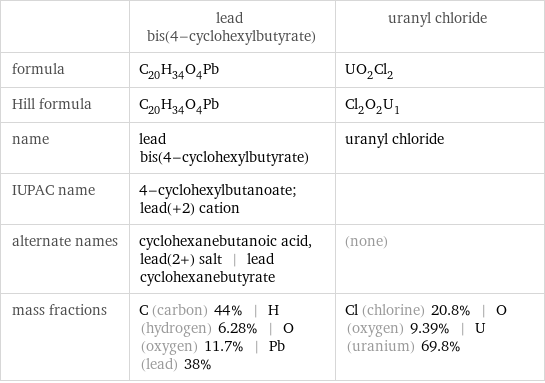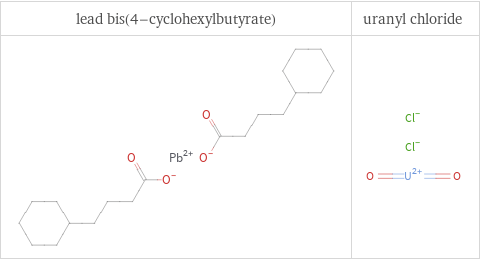Input interpretation

lead bis(4-cyclohexylbutyrate) | uranyl chloride
Chemical names and formulas

| lead bis(4-cyclohexylbutyrate) | uranyl chloride formula | C_20H_34O_4Pb | UO_2Cl_2 Hill formula | C_20H_34O_4Pb | Cl_2O_2U_1 name | lead bis(4-cyclohexylbutyrate) | uranyl chloride IUPAC name | 4-cyclohexylbutanoate; lead(+2) cation | alternate names | cyclohexanebutanoic acid, lead(2+) salt | lead cyclohexanebutyrate | (none) mass fractions | C (carbon) 44% | H (hydrogen) 6.28% | O (oxygen) 11.7% | Pb (lead) 38% | Cl (chlorine) 20.8% | O (oxygen) 9.39% | U (uranium) 69.8%
Structure diagrams

Structure diagrams
Basic properties

| lead bis(4-cyclohexylbutyrate) | uranyl chloride molar mass | 545.7 g/mol | 340.93 g/mol melting point | | 577 °C solubility in water | | soluble
Units
